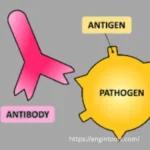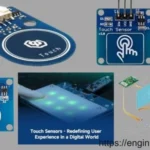What is an RNA Sensor?
RNA sensors are specialized tools or devices used to detect, quantify, and analyze ribonucleic acid (RNA) molecules.
They play a critical role in molecular biology, genetics, and medical diagnostics by providing insight into RNA expression levels, the presence of specific RNA sequences, and the overall RNA profiles of biological samples.

RNA sensors can be essential for research in areas like gene expression, disease diagnosis, and therapeutic monitoring.
How Does an RNA Sensor Work?
RNA sensors typically function through several key mechanisms:
1. Binding: RNA sensors contain probes or detection elements that specifically bind to target RNA sequences. These can be complementary nucleotides, such as DNA or RNA, designed to hybridize with the target RNA.
2. Signal Generation: Once bound, the RNA sensor generates a detectable signal. This could be a fluorescent signal, electrochemical response, or a colorimetric change, depending on the sensor design.
3. Quantification: The intensity of the signal correlates with the amount of target RNA present in the sample, allowing for quantification.
4. Data Analysis: The collected data is then analyzed using software or statistical methods to determine RNA levels and expression patterns.
Types of RNA Sensors
There are several types of RNA sensors based on their detection methods and applications:
1. Fluorescent RNA Sensors: Use fluorescence to detect RNA molecules through specific binding.
2. Electrochemical RNA Sensors: Utilize electrochemical reactions to detect RNA, often involving changes in current or potential.
3. Colorimetric RNA Sensors: Produce a color change upon binding with target RNA, allowing for visual detection.
4. Nanoparticle-based RNA Sensors: Use nanoparticles for enhanced signal detection and amplification.
5. Lateral Flow Assays: Simple tests that provide qualitative results by visually indicating the presence of RNA.
6. Microfluidic RNA Sensors: Integrate small-scale fluid handling to allow rapid and sensitive RNA detection.
Applications of RNA Sensors
RNA sensors have a wide range of applications, including:
1. Disease Diagnosis: Detection of viral RNA (e.g., in COVID-19) or cancer-associated RNA.
2. Gene Expression Studies: Analyzing RNA levels in research to understand gene regulation.
3. Therapeutic Monitoring: Monitoring the RNA levels of therapeutic targets in patients.
4. Environmental Monitoring: Detecting RNA from pathogens in environmental samples.
5. Food Safety Testing: Identifying RNA from foodborne pathogens.
Best Highly-Rated RNA Sensors:
RNA sensors are crucial components of the innate immune system, responsible for detecting foreign RNA molecules and initiating immune responses. They play a significant role in various research and clinical applications, including studies on viral infections, cancer immunotherapy, and gene regulation.
While specific RNA sensor devices are not typically available for direct consumer purchase on platforms like Amazon, there are several laboratory kits and tools designed to detect RNA or study RNA sensing mechanisms. Here are some highly-rated products related to RNA detection and analysis:
1: Thermo Fisher Scientific RNA Extraction Kit
This kit provides high-quality RNA extraction from various sample types, essential for downstream RNA analysis.
2: Qiagen RNeasy Mini Kit
A popular choice for isolating total RNA from cells and tissues, ensuring high purity and yield.
3: New England Biolabs Luna Universal One-Step RT-qPCR Kit
Designed for sensitive and rapid quantification of RNA targets, combining reverse transcription and qPCR in a single step.
4: Bio-Rad Laboratories iScript cDNA Synthesis Kit
Facilitates efficient conversion of RNA to cDNA, a crucial step for gene expression analysis.
5: Agilent Technologies RNA 6000 Nano Kit
Used with the Agilent 2100 Bioanalyzer, this kit allows for precise RNA quality and quantity assessment.
These products can be found on Amazon or through specialized scientific suppliers. When selecting a product, consider factors such as the specific requirements of your research, compatibility with existing laboratory equipment, and user reviews to ensure it meets your experimental needs.
For more specialized RNA sensing technologies, such as programmable RNA sensors used in cell monitoring and manipulation, you may need to consult scientific literature or contact manufacturers directly, as these are often custom tools developed for specific research purposes. For instance, technologies like CellREADR (Cell access through RNA sensing by Endogenous ADAR) have been described in recent studies but may not be commercially available for direct purchase.
Additionally, understanding the role of RNA sensors in innate immunity and their interplay with RNA-binding proteins can provide valuable insights for your research. Comprehensive reviews on this topic are available in scientific journals
In summary, while direct consumer products labeled as “RNA sensors” may be limited, a variety of RNA detection and analysis kits are available to support your research endeavors.
Conclusion
RNA sensors are vital tools in modern biological research and diagnostics. Their ability to detect and quantify RNA can facilitate advancements in healthcare, environmental science, and food safety.
When choosing an RNA sensor, it’s essential to consider the type, application, and brand to ensure it meets your specific needs.
Explore More Sensor Technologies
If you’re interested in diving deeper into the fascinating world of sensor technologies, here are some expert-curated lists to expand your knowledge:
- Top 10 Pressure Sensors – Discover the most reliable and accurate pressure sensors used in industrial, automotive, and medical applications.
- Top 10 Inductive Sensors – Explore the best sensors for non-contact detection of metallic objects in automation and robotics.
- Top 10 Enzyme Sensors – Learn about cutting-edge enzyme-based biosensors used in biomedical diagnostics and environmental monitoring.
- Top 10 Antigen Sensors – See how modern antigen sensors are transforming disease detection and point-of-care testing.
- Top 10 Hormone Sensors – Gain insights into advanced hormone detection tools for clinical, sports, and reproductive health applications.


